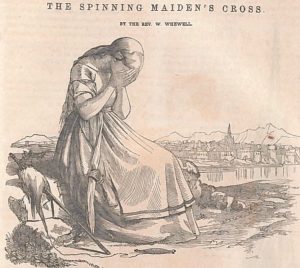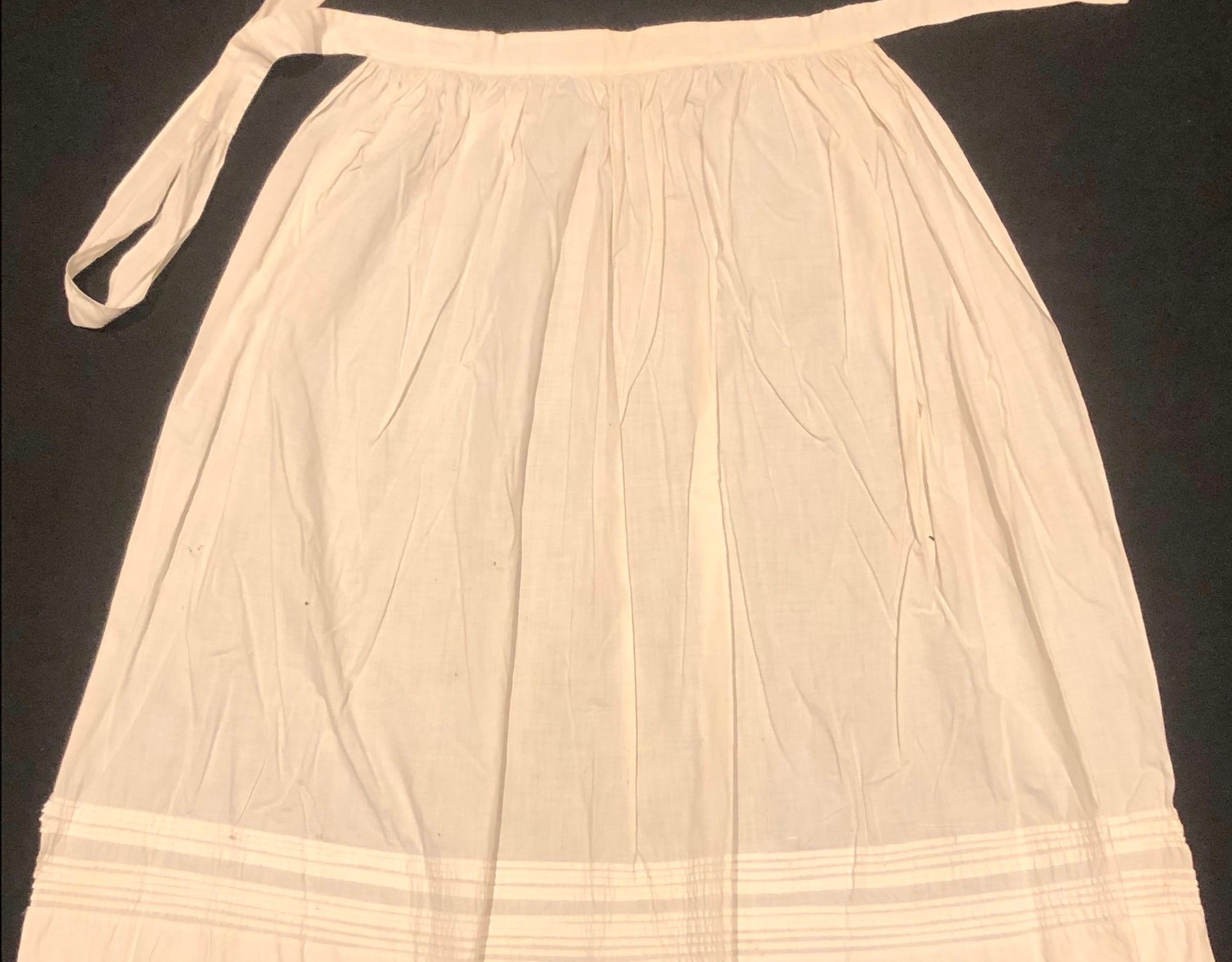This maid’s apron is also a plain cotton weave and has a detailed bottom. It has numerous small pleats which make the stripe detail and it also has lace trim at the very bottom.
This apron only has a few small holes in it and no stains, implying that it would have been worn by a servant who did not have to undergo much grimy work. Even if she did have to get her hands dirty, many employers disliked it when their maids were unkempt, as Ellen Howe described in her article “The Art of Keeping Servants” in Ladies Home Journal 1893. She would “not tolerate untidiness in person or dress” and also would “never help about the work.” Howe admits that though she herself is a housewife, she does not do any of the housework because she has these properly kept servants.
Howe sounds as if she was a strict employer and which was probably most often the case. Maid’s had to endure this treatment because it was their source of income which helped to keep their family afloat. The maid in the image and story below wears a similar apron and is experiencing similar feelings to many maids of the nineteenth century who had employers similar to Howe.

Ladies Home Journal: January 1893, Periodicals Collection, Sophia Smith Collection, Smith College, Northampton, MA, 8.
The Workwoman’s Guide by a Lady: A Guide to 19th Century Decorative Arts, Fashion and Practical Crafts. N.p.: Opus Publishers Inc., 1986, 78.
White Cotton Apron, Historic Clothing Collection, Smith College, Northampton, MA. 2011.8.126.
